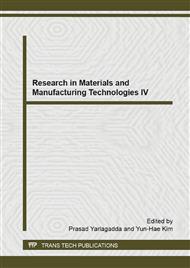p.351
p.355
p.359
p.371
p.377
p.382
p.386
p.392
p.396
Flexural Behavior of Basalt Fiber Reinforced Ferrocement Composite with Fly Ash
Abstract:
Ferrocement composite is constructed by cement mortar and reinforced buy layers of continuous and relatively small size wire mesh. The high cement usage in the mixture causes environmental and economical impacts. Basalt fiber is produced from melted basalt rock. This paper reports the experimental investigation carried out on the flexural characteristics of ferrocement composite using various kinds of basalt meshes by basalt fiber and different volume of Class F fly ash. The results clarify that the ferrocements without fly ash or with a small percentage of fly ash have a good mesh/matrix bond, leading to a better flexural behavior. The high volume of fly ash is shown to have a negative effect.
Info:
Periodical:
Pages:
377-381
Citation:
Online since:
December 2014
Authors:
Keywords:
Price:
Сopyright:
© 2015 Trans Tech Publications Ltd. All Rights Reserved
Share:
Citation:


